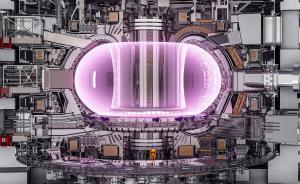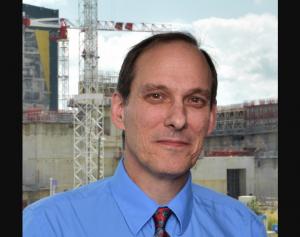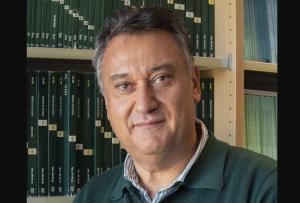Going where no fusion experiment has gone before
In an increasingly populated fusion landscape where private companies are joining publically funded institutions, what is the value of ITER as a scientific instrument?
On 12 September 1962, President John F Kennedy gave a rousing speech at Rice University in Houston, Texas.
"We choose to go to the moon," he thundered to a packed stadium. "We choose to go to the moon in this decade and do the other things, not because they are easy, but because they are hard, because that goal will serve to organize and measure the best of our energies and skills, because that challenge is one that we are willing to accept, one we are unwilling to postpone, and one which we intend to win, and the others, too."
It's a quote that sits well with plasma physicists like Tim Luce, Head of ITER's Science & Operation Domain, and Alberto Loarte, Head of ITER's Science Division. Both scientists have dedicated decades of their lives to fusion research, and today are helping to drive ITER's work forward.
There has never been a more remarkable time to be a fusion researcher. Not only is there a burgeoning interest from governments around the world in the potential for fusion energy, but the private sector is also fast ramping up its efforts and investments. Startup companies pursuing fusion have popped up in the United States, Canada, the United Kingdom, France, Japan, Germany, Australia, China, Italy and Israel, and raised an estimated USD 4.8 billion in funding—including USD 2.8 billion¹ just in the past year.
Tokamaks operating around the world have been upgraded as scientists make strides in their understanding of tokamak operation and control, and break new ground (see recent news here and here). Advanced facilities are planned for the investigation of fusion materials and tokamak power exhaust.
So what will be the place for ITER—now 77% of the way to its first plasma—in this crowded fusion landscape?
"ITER really is absolutely unique, as a physics experiment," says Luce. "We will be going where nobody has ever been before."
Loarte explains: "What we're doing here, and what's never been achieved anywhere else on Earth, is to prove that plasmas can self-heat themselves by fusion. We've seen fusion power demonstrated elsewhere—notably at JET, last year—but only with heat almost fully-supplied from external sources."
Self-heating plasmas will be the key in the future to producing electricity from fusion energy, allowing for sustained, ongoing fusion reactions, despite strongly reduced input power from external heating sources.
Inside the ITER vacuum vessel, fusion reactions will produce two types of particles. Uncharged neutrons (80% of the energy) will escape the plasma's magnetic cage and collide with the walls of the chamber where they generate the heat that, in a fusion power plant, would be captured and exploited as output power. Charged helium nuclei (also called alpha particles, 20% of the energy) remain captive within the plasma and—because they are extremely fast and energetic—increase the heat in the plasma.
"A direct consequence of setting out to create a self-heating plasma," says Luce, "is that there are a whole load of other things that are then unique to ITER, simply because the physics criteria define the scale and size of the ITER facility."
"These include the need for a really big tokamak, the large magnetic field strength, the superconducting coils, and much more—so that we can create a plasma volume big enough to generate the self-heating reaction. Only at the scale of ITER can we hope to generate so much more energy than we put in, and to do this at a power-plant-like level of 500 megawatts."
The scientists both stress that ITER is highly unusual as a scientific experiment. "With most big experimental facilities," says Luce, "we know in advance how the facility works, and we use that facility to make observations—radio telescopes are a good example of this. But ITER is completely different: operating the machine is the experiment. We understand how the facility is expected to work, but the outcomes are uncertain. At ITER, we are provoking the science, rather than simply observing the science."
"This ability to provoke the science, and to experience phenomena—such as the self-heating plasma—that nobody ever experienced before... that really motivates me as an experimentalist," adds Luce.
Loarte agrees: "Plasma physics is incredibly exciting because you can actually test your ideas by doing specific experiments. It's completely unlike other fields, such as observing the universe, in which you can only try to explain what you see. Everything we do here at ITER has a practical angle. We're confident that we'll create nuclear fusion and hundreds of megawatts of power—but we don't know exactly how the self-heated plasma will behave, and how that will translate in terms of actual numbers. Once the plasma is self-heated, the physics changes completely. So what we create at ITER—will it be like the sun, or not?"
It is no wonder that so many nations are investing in ITER as part of national fusion energy strategies. ITER in operation will give plasma scientists ringside access to frontier physics and the chance to answer questions that are essential to the operation of a fusion plant—such as how to create and maintain a self-heating plasma, and what are the optimal operating conditions for high fusion performance.
Luce is a true believer in the quest. "As scientists, we're all explorers," he says. "We want to find new frontiers. It's like going on a journey into the unknown. We think we know what lies at the end of the journey, but we can't be sure until we get there. We have maps, but we don't know if they're accurate. If the maps are good, however, then the journey will certainly be much easier."
And what an important journey this is.
¹From the Fusion Industry Association's latest report: "The Global Fusion Industry in 2022."




